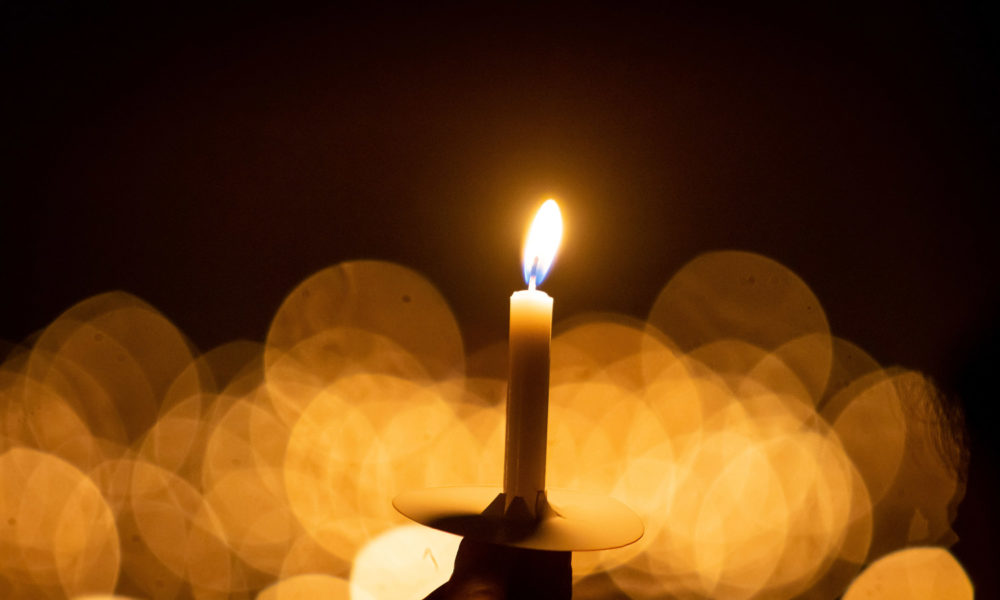Take a moment. Today, April 28, is not just another day. It’s Worker Memorial Day, the day when people in the US and around the world pause to recognize, remember, and honor those who have suffered and died of injuries and illnesses related to their work.
Perhaps you know one of these workers—someone you loved, cared about, depended on—a family member, friend, neighbor, colleague, co-worker. But for sure, it’s also someone whose name you don’t know; someone whose work and service provided you and yours with something you needed, wanted, and more than likely took for granted. The food on your table; the medical and nursing home care you needed; the utilities and services that powered your home and your travel; the products you used on a daily basis (perhaps even delivered directly to your door).
Some of those workers paid the ultimate price. Surely we can take a moment for reflection, and strengthen our call for action. If not now, in the face of a deadly pandemic that continues to claim workers’ lives, then when?
COVID-19’s toll
Daily trackers report the devastating toll of this deadly pandemic (here, here, here), with another grim milestone reported just last week: “The U.S. death rate in 2020 was the highest above normal since the early 1900s—even surpassing the calamity of the 1918 flu pandemic.”
Far too many of our nation’s workers—the bedrock of our families, communities, and economy—are risking their health and their lives to keep the rest of us safe, healthy, supplied, and equipped to go about our daily lives. While one-stop and comprehensive data on COVID-19 deaths by occupation are hard to come by, reporters, researchers, and public interest organizations provide snapshots that illuminate the toll on our nation’s essential workers.
Health care and food system workers have been particularly hard hit. The Guardian newspaper, in partnership with Kaiser Health News, documented health care worker deaths in the US. They counted more than 3,600 healthcare worker deaths recorded between mid-March 2020 and April 7, 2021. Fire fighters, paramedics, and other first responders are also at increased risk.
The Food and Environment Reporting Network has done real-time tracking of COVID-19 cases and deaths in food production facilities and on farms over the past year. The data are updated daily at noon; here are the numbers as of today.
Warehouse workers have recently garnered public attention on several fronts (e.g., an unsuccessful union drive in an Alabama Amazon facility), including their increased COVID-19 risk and need for mitigation noted by a national group of occupational health physicians and public health experts.
The statistics tell only part of the story. It’s the faces, lives, and losses behind the data that bring the story home. Take a look—here, here, and here—and then join the chorus of voices calling on the Occupational Safety and Health Administration (OSHA) to do its job and issue an enforceable emergency temporary standard (ETS) to protect workers from COVID-19. A year-plus into a deadly pandemic, and we’re still waiting. But there are signs of progress. Earlier this week (April 26), OSHA sent the draft COVID ETS to the Office of Management and Budget (OMB) for review (see here and here).
Want to hear what OSHA has to say? You can watch a live hearing on Friday, April 30, at 2:00 pm ET when the House Subcommittee on Workforce Protections holds a hearing titled, “Protecting Workers from COVID-19: Monitoring the Status of OSHA’s Emergency Temporary Standard.”
Beyond COVID-19: The staggering toll of worker fatalities, injuries, and illnesses
Fatalities: While far from the number of COVID-19 deaths, the annual toll of work-related fatalities remains far too high. In 2019 the recorded number of fatal work injuries was 5,333—a two percent increase over 2018 and the largest annual number since 2007. That’s 14 people dying every day—in the United States! That’s someone’s parent, child, sibling, partner, co-worker, or best friend who never made it home from work at the end of the day. And aside from not reflecting the pain and loss of the families left behind, the data don’t begin to capture the horror they must endure thinking about their loved one’s last moments—a fall, an electrocution, suffocation in a grain elevator or collapsing trench, crushed between moving parts of heavy machinery, or an assault by a violent patient, client, or customer.
Non-fatal injuries and illnesses: According to the Bureau of Labor Statistics (BLS), private industry employers reported over 2.8 million non-fatal workplace injuries and illnesses in 2019, nearly one-third of which were serious enough to result in days away from work—the median being eight days. BLS reports another 682,700 non-fatal injuries and illnesses among state and local government workers in select industries. Yet these numbers don’t come close to revealing the true burden on our nation’s workers.
Diseases resulting from workplace exposures are notoriously under-recognized and under-reported (see here, here, here). These include cancers, cardiac, respiratory, and skin diseases resulting from exposure to toxic chemicals, as well as diseases caused by exposure to harmful physical agents, such as heat, cold, noise, vibration, and radiation. A widely cited 2011 study estimated the number of fatal and non-fatal occupational illnesses in 2007 at more than 53,000 and nearly 427,000, respectively, with cost estimates of $46 billion and $12 billion, respectively.
Our federal government is stepping up. Let’s make sure they keep at it.
I won’t reprise the sorry state of the previous administration’s actions and inactions—from its utter failure to prepare for, coordinate, and respond to the pandemic to its rollback of public protections and its decimation of and scorn for federal agency science and scientists. And the Trump administration was no friend to workers, that’s for sure.
But hey, on this Worker Memorial Day, let’s look ahead. We now have a president who campaigned on helping workers—with concern for their health, their jobs, their families, and their future—and he has taken some early action. He’s spoken out about racial equity and social justice, and about the deep, pervasive, and endemic health, economic, and social disparities in our country. He also has taken early action to restore and ensure the role that science and scientific integrity play in government decision-making (here, here).
At the Union of Concerned Scientists, we are heartened and hopeful. But we know vigilance and pressure will always be needed, and we can’t let worker safety fall through the cracks. Especially given the deep divide and corrosive environment on Capitol Hill. And the clear need to protect and ease the plight of workers in this changing world.
Lots to do, but most immediately, let’s demand that OSHA issue and then vigorously enforce an emergency temporary standard to protect workers from COVID-19 (scientists and experts can send a letter here). And then get back to work on a more comprehensive infectious disease standard, as this pandemic is unlikely to be the last. Let’s make sure that workers have the personal protective equipment they need today and create a stockpile for the future.
And then we can get on to all those other things our nation’s workers deserve, like a living wage, health care, safe working conditions, the right to unionize (not to mention the right to vote!), job and community transition assistance, and simple respect for the work they do.
For today, take a moment to reflect on the sacrifices of our nation’s fallen workers—and then commit to stand in solidarity with our working brothers and sisters and call on our elected leaders to do the same.

